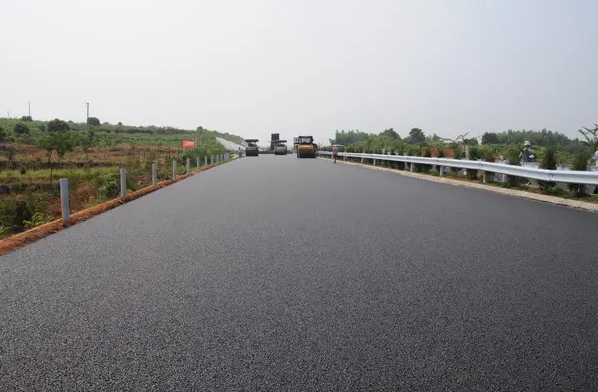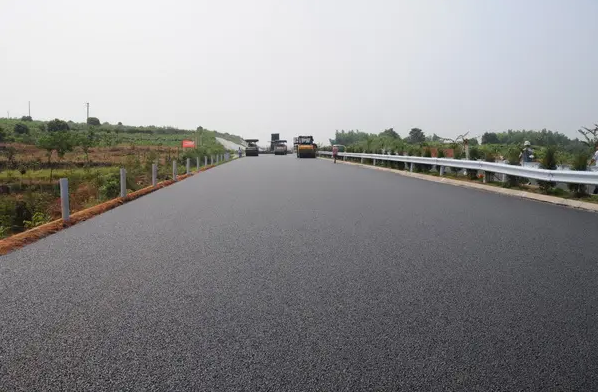
What are the factors that affect the demulsification speed of emulsified asphalt?
June 9, 2022

The demulsification speed of emulsified asphalt is the state change per unit time. Including color, cohesiveness and consistency, etc. After the demulsification is completed, the asphalt restores its original properties. The time of demulsification, with the change of the material in contact and the climate, the factors that affect the speed of demulsification are summarized as follows:
1. The influence of the type and amount of asphalt emulsifier
Asphalt emulsifiers can be divided into three types: fast cracking, medium cracking and slow cracking in terms of cracking speed, but this cracking speed is only defined by the interaction and contact with the stone. Therefore, it is not only the demulsification speed in application. , and the more important setting time. The setting time includes fast setting, medium setting and slow setting, so there are more than a dozen kinds of slow cracking and fast setting, slow cracking and medium setting, slow cracking and slow setting, and ultra-fast and ultra-slow. , This refined distinction is very scientific and professional, and is naturally formed in practice. Emulsified asphalt is correspondingly divided into more than ten kinds. These asphalt emulsions are selected according to the type of emulsifier in the application, and different selections have different demulsification speeds. At the same time, the same emulsifier is used to prepare asphalt emulsion. Due to the different amount of emulsifier used, it also affects the demulsification speed to a certain extent. When the amount of emulsifier is large, the speed of demulsification can be delayed, and when the amount of emulsifier is small, it can also be accelerated. speed.
2. The influence of construction climate
Climate is an important factor affecting the demulsification speed, such as temperature, humidity, wind speed and other factors will affect the demulsification speed of the emulsion. High temperature, low humidity and high wind speed will accelerate the demulsification, on the contrary, it will slow down the speed of demulsification.
3. Adsorption of ionic charges
The roughness and humidity of the aggregate surface directly affect the absorption of moisture in the emulsion, and also affect the speed of demulsification. For example, aggregates with many pores and rough surfaces quickly absorb the moisture in the emulsion, destroy the balance of the emulsion, and speed up the demulsification. , if the surface of the aggregate is dense and lustrous, the water absorption is very small, which will slow down the demulsification speed of the emulsion. Of course, the amount of water in the aggregate itself will inevitably affect the rate of demulsification.
5. Influence of aggregate particle size
The smaller the particle size of the bone particles, the larger the specific surface area. The gradation and mineral composition of the aggregate particles directly affect the surface area of the aggregate. Generally, the larger the specific area, the larger the contact surface between the emulsion and the aggregate, and the faster the demulsification speed of the emulsion. On the contrary, when the bone particle size is coarse and the specific surface area is small, the demulsification speed will slow down.
6. The role of mechanical force
After the emulsified asphalt contacts with the aggregate for demulsification, it can accelerate the demulsification and coagulation molding time of emulsified asphalt under the action of mechanical impact and pressure (for example, under the action of a tire roller and a running vehicle).
In addition to the above factors, increasing the asphalt content, using fast-breaking emulsifiers, changing the amount of hydrochloric acid and adjusting the amount of emulsifiers, and increasing demulsifiers such as lime and cement can all speed up the rate of demulsification.
7. Other factors affecting modified emulsified asphalt (including emulsified asphalt)
To make an emulsion with uniform particle size, acid should be added to the asphalt. For example, naphthenic acid can reduce the average particle size of the emulsion, and increasing the specific surface area of the asphalt can accelerate the demulsification; It can reduce the particle size and improve the stability of the emulsion by increasing the amount of acid and amine emulsifiers produced by cationic emulsified asphalt. Another example is the operation of emulsified colloid mill. The smaller the gap, the smaller the particle size and the higher the rotation speed. The particle size of the emulsion produced is small and the quality is uniform.
To sum up, there are many factors that affect the performance and quality of emulsified asphalt, and the relationship between them is intricate. However, whether it is the changes of stability, adhesion, demulsification speed, etc., there are important factors and laws. As long as these factors and laws are mastered, ideal emulsified asphalt and modified emulsified asphalt can be produced.
1. The influence of the type and amount of asphalt emulsifier
Asphalt emulsifiers can be divided into three types: fast cracking, medium cracking and slow cracking in terms of cracking speed, but this cracking speed is only defined by the interaction and contact with the stone. Therefore, it is not only the demulsification speed in application. , and the more important setting time. The setting time includes fast setting, medium setting and slow setting, so there are more than a dozen kinds of slow cracking and fast setting, slow cracking and medium setting, slow cracking and slow setting, and ultra-fast and ultra-slow. , This refined distinction is very scientific and professional, and is naturally formed in practice. Emulsified asphalt is correspondingly divided into more than ten kinds. These asphalt emulsions are selected according to the type of emulsifier in the application, and different selections have different demulsification speeds. At the same time, the same emulsifier is used to prepare asphalt emulsion. Due to the different amount of emulsifier used, it also affects the demulsification speed to a certain extent. When the amount of emulsifier is large, the speed of demulsification can be delayed, and when the amount of emulsifier is small, it can also be accelerated. speed.
2. The influence of construction climate
Climate is an important factor affecting the demulsification speed, such as temperature, humidity, wind speed and other factors will affect the demulsification speed of the emulsion. High temperature, low humidity and high wind speed will accelerate the demulsification, on the contrary, it will slow down the speed of demulsification.
3. Adsorption of ionic charges
The adsorption of the charge in the asphalt emulsion and the charge in the aggregate or pavement, that is, the ionic charge. At present, the aggregates used in road construction in my country are silicates and carbonates. In the wet state, the surface of the aggregate is generally negatively charged, so when the cationic asphalt emulsion contacts the surface of these aggregates, the anions and cations will immediately produce adsorption. Even in the wet state, this ion adsorption is not affected. The adsorption of this ion makes the emulsion break immediately.

The roughness and humidity of the aggregate surface directly affect the absorption of moisture in the emulsion, and also affect the speed of demulsification. For example, aggregates with many pores and rough surfaces quickly absorb the moisture in the emulsion, destroy the balance of the emulsion, and speed up the demulsification. , if the surface of the aggregate is dense and lustrous, the water absorption is very small, which will slow down the demulsification speed of the emulsion. Of course, the amount of water in the aggregate itself will inevitably affect the rate of demulsification.
5. Influence of aggregate particle size
The smaller the particle size of the bone particles, the larger the specific surface area. The gradation and mineral composition of the aggregate particles directly affect the surface area of the aggregate. Generally, the larger the specific area, the larger the contact surface between the emulsion and the aggregate, and the faster the demulsification speed of the emulsion. On the contrary, when the bone particle size is coarse and the specific surface area is small, the demulsification speed will slow down.
6. The role of mechanical force
After the emulsified asphalt contacts with the aggregate for demulsification, it can accelerate the demulsification and coagulation molding time of emulsified asphalt under the action of mechanical impact and pressure (for example, under the action of a tire roller and a running vehicle).
In addition to the above factors, increasing the asphalt content, using fast-breaking emulsifiers, changing the amount of hydrochloric acid and adjusting the amount of emulsifiers, and increasing demulsifiers such as lime and cement can all speed up the rate of demulsification.
7. Other factors affecting modified emulsified asphalt (including emulsified asphalt)
To make an emulsion with uniform particle size, acid should be added to the asphalt. For example, naphthenic acid can reduce the average particle size of the emulsion, and increasing the specific surface area of the asphalt can accelerate the demulsification; It can reduce the particle size and improve the stability of the emulsion by increasing the amount of acid and amine emulsifiers produced by cationic emulsified asphalt. Another example is the operation of emulsified colloid mill. The smaller the gap, the smaller the particle size and the higher the rotation speed. The particle size of the emulsion produced is small and the quality is uniform.
To sum up, there are many factors that affect the performance and quality of emulsified asphalt, and the relationship between them is intricate. However, whether it is the changes of stability, adhesion, demulsification speed, etc., there are important factors and laws. As long as these factors and laws are mastered, ideal emulsified asphalt and modified emulsified asphalt can be produced.

Tel: 4000-676-878
WhatsApp:+86 18224529750
Email: sales@sinoroader.com
Wechat: Sinoroader
Code: 461000
Address: No. 1001 Longxiang Industrial Park, Weidu District,XuChang,HeNan, China
WhatsApp:+86 18224529750
Email: sales@sinoroader.com
Wechat: Sinoroader
Code: 461000
Address: No. 1001 Longxiang Industrial Park, Weidu District,XuChang,HeNan, China
Copyright © 2023 Henan Sinoroader heavy Industry Corporation. Amallink.com

